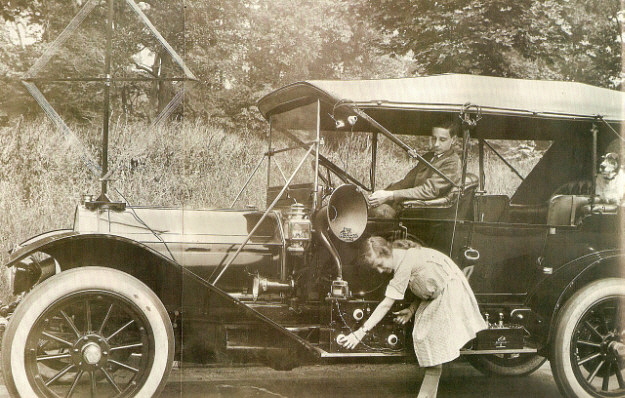First, there was the rise of print culture in the late nineteenth century. A lot of this had to do with the emergence of color lithography and the invention of photolithography (which is now extensively used in the computer you are using to manufacture printed circuit boards). Here is a great design blog that I found that supplies an overview with images of the emergence of print advertising.
Advertising may have been the first major outlet to embrace color lithography, but what is advertising anyway? (Answers... you fans of Mad Men?) Some people are even cynical to refer to advertising as propaganda. Is that fair?
The First World War was the first place to see extensive use of color lithography in conjunction with government propaganda. Let's look at some of these posters from the war. What sort of messages are they trying to convey? How might they reflect the newly emergent field of psychology?
Radio was in its infancy during the First World War, but emerged as a powerful force in the consumer market very shortly thereafter. In fact, the United States Census asked Americans whether or not they owned a radio in the home in 1930, it was that profound of a phenomenon.
A car with an awesome sound system - 1923 style.
Radio was not often live in its early years. In fact, it was produced (and carefully controlled) so as to deliver a specific message. Often actors and not the actual historical figures, filled the speaking roles on the radio - like in this recording from Time Magazine's "March of Time."
Of course, if you couldn't read or write, you could still enjoy the radio. Think about the implications of that. The first global sporting event was the famous fights in 1936 and 1938 between Joe Louis and Max Schmeling held in Yankee Stadium.
With the radio came the rise of a media form with which we are very familiar today - the news reel, or the forerunner of the television news broadcast. Newsreels used to play in advance of another emergent cultural phenomenon, the cinema. That is, while you were waiting for the movie to start. Some were not very exciting, like this film of Mussolini speaking in 1932:
But as the art grew more sophisticated, we begin to see clear editorial choices designed to evoke an emotional response in the viewer.
Here is an early reel from the Lindbergh Baby case (Lindbergh himself a victim of mass media)
Or the "Year in Review" From 1935
The power of radio, print, and newsreel (as well as cinema) came from the rise of what we call SYNDICATION.
The newsreel took cues from cinema itself. The first feature-length film, D.W. Griffith's Birth of a Nation glorified the Lost Cause ideology of the Civil War and lionized the Ku Klux Klan. A cinematic masterpiece, it premiered in 1915.
Stalin, Mussolini, Hitler, FDR, Churchill, all understood the importance of cinematic propaganda - either in feature films or in newsreels.
Drums Along the Mohawk is one of the films from the legendary year of 1939. It strikes a theme of hope in a time of travail - a message resonant in Great Depression Era America.
The most famous cinematic effort at propaganda during the 1930s, however, has to be Lene Reifenstahl's Triumph of the Will.
The emergence of World War II will bring imagery of conflict to a much greater audience than ever before possible - but it (like today's news) will be carefully stage managed.
This incredible Japanese propaganda war footage from 1942 was even in color:


No comments:
Post a Comment